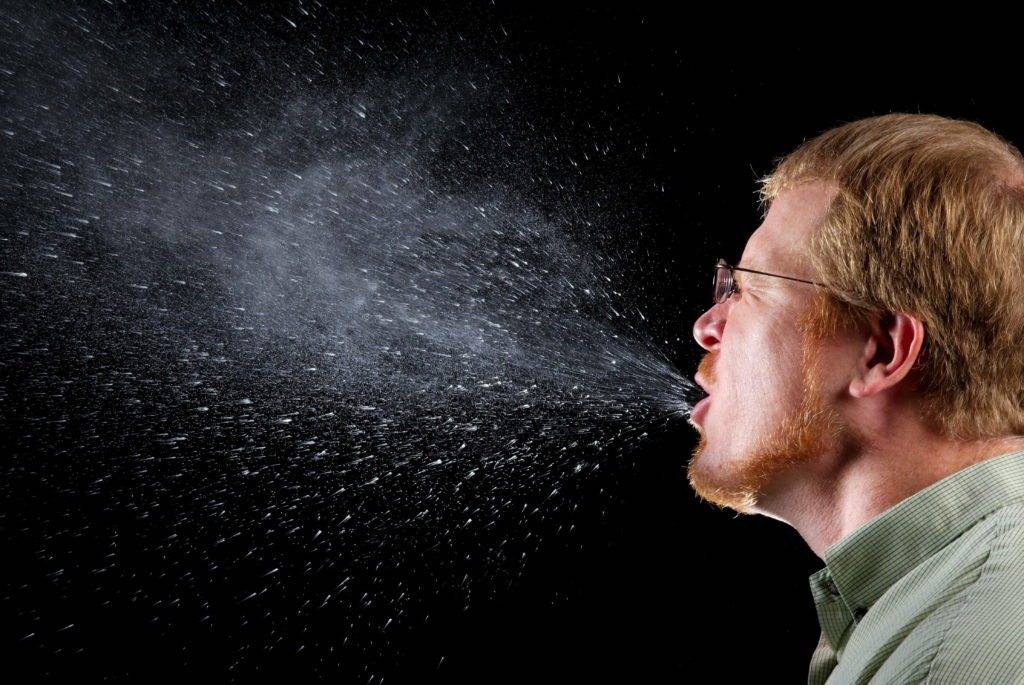Is your child experiencing sore throat-like symptoms? If so, your child might have a strep throat infection. For parents, it’s essential to understand this highly contagious disease commonly affecting children.
In this post, we will delve into the attributes of a strep throat infection that every parent should fully understand. The discussion will cover the causes, symptoms, diagnosis, treatment, home remedies, possible complications, and more of the illness.
What is a Strep Throat Infection?

A bacterial infection that affects the tonsils and throat, strep throat is also referred to as streptococcal pharyngitis. A type of bacteria called Streptococcus pyogenes, also known as Group A Streptococcus (GAS), is known to be the cause of the infection.
The Centers for Disease Control and Prevention (CDC) have revealed that GAS contributes to 1,100–1,600 recorded deaths annually. It’s highly contagious and spreads through respiratory droplets, direct contact, or sharing personal items with an infected person.
Parents and caregivers need to understand the nature of the infection for prompt treatment, to prevent it from spreading, to make an accurate diagnosis, and to prevent complications. Stay on this page as we delve deeper to discuss the salient features.
How Can My Child Contract Strep Throat Infection?
A strep throat infection commonly occurs in children between the ages of 5 and 15, particularly school-aged children. Hence, it isn’t surprising that school absenteeism may be due to this illness. Here are some ways your child will contract the illness:
Direct Contact

The bacteria can spread when your child comes into contact with the infected person’s saliva or nasal secretions, spitting, or even bruises or sores on the skin. They also touch their mouth, nose, or eyes after touching a contaminated surface.
These are common among children, teenagers, and even adults. To mitigate the transmission, let your child wear a surgical mask if you suspect that they have this infection. Also, frequent handwashing can help contain the spread.
Indirect Contact
The bacteria from an infected person spread airborne or as respiratory droplets. When an infected person talks, coughs, or sneezes, the particles in the air could pass their infection to the person who has inhaled the infected droplets and particles.
Typically, this is quite common when children come into close contact with an infected person. Schools, playgrounds, and daycares are the usual sources where there’s heavy interaction between children and adults. We can’t control our kids when they play.
Additionally, if a person eats from the same plate, drinks from the same glass, and uses the same utensils as an infected person, there’s a high chance that the bacteria will be passed on.
As an ideal practice, don’t let your child share their plates and glasses with others, especially when you suspect they might have a strep throat infection.
Strep Carrier
As many as 1 in 5 children are strep carriers. As the name implies, they carry strep-causing bacteria but don’t manifest symptoms. They can still spread the bacteria; thus, they need treatment to prevent the spreading and complications.
What are the Symptoms of Strep Throat Infection?
The symptoms of a strep throat infection include those that are present in a common sore throat. It may vary from mild to severe. Here are signs to look out for:
- Sore throat
The individual may experience pain, scratchiness, or a dry feeling in the throat. In some instances, there’s a burning sensation.
- Painful swallowing
There is difficulty or discomfort when swallowing food, liquids, or saliva.
- Pus on the throat or pharynx.
Yellow or white spots or coatings are present on the throat or pharynx.
- White patches on the tonsils.
The tonsils have white or yellowish patches or spots, resembling streaks of pus. It also appears red and swollen. There are also tiny red spots on the roof of the mouth
- Bright red tongue
The tongue appears too reddish, which is brighter than the usual color. In a few instances, white spots may also appear.
- Red spots near the mouth.
Small, red spots are present on the skin around the mouth.
- Multiple swollen lymph nodes at the neck.
Lymph nodes are swelling and tender in the neck area, sometimes with abscess formation.
- Fever
The body temperature is above the normal range.
- Headache
Numerous factors can contribute to the pain or pressure felt in the head. Among babies, they appear fussy and restless.
- Body aches
There could be generalized pain in the joints or muscles, often accompanied by fatigue or weakness. The child may be sleeping more than usual.
- Nausea and vomiting
Especially among young children, there’s a poor appetite. It feels sick to the stomach, often leading to vomiting or diarrhea.
- Skin rashes
The skin has red, itchy, or painful patches or bumps. There’s a sandpaper-like rash on the body or scarlet fever.
Symptoms are common and can be seen in other viral sore throat diseases. Thus, knowing whether your child’s sore throat is viral or bacterial is important.
What is the Diagnosis and Treatment for Children?

Many parents worry about strep throat infections in their children. Keep calm, and let your child’s pediatrician handle the illness. We at Omega Pediatrics perform a rapid strep test.
Treatment usually involves antibiotics, such as penicillin or amoxicillin, which should be taken for ten days, even if the symptoms improve within a few days.
The patient should rest and drink plenty of fluids. They should avoid close contact with others until they have been on antibiotics for at least 24 hours.
Over-the-counter pain medications and home remedies, such as drinking warm liquids and gargling with salt water, can help alleviate the symptoms. Good hygiene practices, such as washing hands regularly, can help prevent the spread.
Will My Child Need a Tonsillectomy for Recurring Strep Throat?
If your child keeps coming down with strep throat, you might wonder if a tonsillectomy is necessary. Here’s a thorough look at the typical guidelines and situations where this procedure might be recommended.
When is a Tonsillectomy Recommended?
A tonsillectomy is considered when a child frequently suffers from strep throat, particularly if:
- The child had seven or more occurrences within a single year.
- The child faced five bouts annually for two consecutive years.
- There were three episodes each year over a period of three years.
Other Factors Influencing the Decision
Beyond frequent infections, other factors can influence whether a tonsillectomy is advisable:
- Antibiotic Allergies: If your child develops an allergy to commonly prescribed antibiotics, making treatment more complicated.
- Antibiotic Intolerance: Intolerance to antibiotics can also be a significant consideration.
- Complications from Infections: If complications arise from repeated infections, this could prompt a discussion about surgical options.
Consultation with a Healthcare Provider
It’s essential to consult with a healthcare provider to evaluate your child’s specific situation. They can provide personalized advice and determine whether a tonsillectomy is the best course of action based on the frequency of infections and any other medical concerns. Keep in mind that each case is unique, and a professional evaluation is crucial.
What are the Health Complications of Streptococcal Infection?
If untreated, strep throat can lead to complications. However, serious complications aren’t common. Consult with a pediatrician like Omega Pediatrics once your child experiences these symptoms. Two types of complications can occur:
Complications that Spread to Other Parts of the Body
The infection can spread beyond the throat cavity into nearby tissues. This may cause the following complications:
- Otitis media: middle ear infection
- Peritonsillar abscess: pus collecting around the tonsils with some pressure or inflammation effects on the nerves and tissues
- Toxic shock syndrome: harmful toxins the bacteria produce are absorbed into different body parts.
- Sinusitis: fluid buildup in the sinuses
- Retropharyngeal abscess: pus collection in the space within the neck behind the pharynx
- Lymphadenitis: infection of the lymph nodes
Complications Due to the Response of the Body
These complications, on the other hand, are related to how the body responds to the infection and not the effects of the infectious agents themselves.
- Scarlet fever: streptococcal infection characterized by a prominent rash
- Glomerulonephritis: an inflammation of the kidneys that can lead to chronic kidney disease
- PANDAS: Pediatric Autoimmune Neuro Disorders Associated with Streptococcal Infections
- Rheumatic fever is a serious inflammatory condition that affects the heart, joints, nervous system, and skin
These complications are all very serious and could be life-threatening. When the body’s immune system reacts abnormally, it can lead to chronic illness and severe lifelong health problems.
These are concerning for anyone, especially children who have much more time to live, all things being otherwise equal.
What to Do When You Have a Step-Throat Infection

When in doubt, make that call and see your doctor. If you don’t have a doctor yet and you live near Roswell, Georgia, consider Omega Pediatrics. They treat your child’s sore throat, whether it is a bacterial infection like strep or a viral infection. Book an appointment here.
It doesn’t matter whether you think it’s a strep throat infection; having the child diagnosed is safer than assuming it is or is not. While waiting for your pediatrician’s appointment, you may do the following:
- Ensure that your child is drinking enough and remains well-hydrated all the time.
- Have some over-the-counter antipyretics (ibuprofen) to help reduce the pain and fever.
What to Expect When You Visit Your Pediatrician
Here’s what to expect when it’s time for your appointment with the pediatrician near you.
- Rapid Swab Test
The pediatrician will conduct a rapid swab test to determine if your child is positive for a strep infection.
- Antibiotic Prescription
If the swab test results are positive, the pediatrician will prescribe antibiotics. In cases where the child has a hard time swallowing or drinking medicine, parenteral antibiotics are prescribed—that is, injected—to kill streptococci in the body.
What if the Result is Negative for a Strep Infection?
If the results are negative, there’s a high chance that your child has a viral throat infection. In this case, the pediatrician will not prescribe you antibiotics. Your child will be given a different treatment instead.
For clinical symptoms, a scoring system was developed and published in 1998 to help reduce the overuse of antibiotics. Fill out the form here to determine if your child is suitable for antibiotics.
Get into detail and learn more about streptococcal pharyngitis from the AFP Journal here.
Treat Your Child’s Strep Throat Infection Today!
Your child experiencing symptoms of a strep throat infection could be very worrisome. Thus, it is crucial to have it checked by a doctor to mitigate the complications that the infection could develop.
Omega Pediatrics in Roswell, Georgia, could help you with that. We offer a wide range of pediatric services, serving families in Alpharetta, Milton, Roswell, Marietta, Cumming, Johns Creek, Canton, Woodstock, Sandy Springs, and Atlanta. Strep throat is one of those common ailments that we take care of after school with in-office testing and same day prescriptions.
With a family-oriented approach to their clients, your child will not be afraid to open up and share their feelings with the pediatricians. We at Omega Pediatrics are committed to providing accessible and convenient service beyond what one would expect from an ordinary pediatrician’s office.
We hope you find this article helpful. If you wish to learn more about strep throat infection, these articles are worth reading: How Your Pediatrician Decides Whether Your Child Has Strep Throat Infection or Not and What Treats Strep Throat in Children?
Can I Give My Child Throat-Numbing Sprays for Pain?
Yes, you can give your child throat-numbing sprays to alleviate throat pain. These sprays contain ingredients that numb the tissues in the throat, making swallowing less painful and providing temporary relief.
Here’s what you should know:
Choose Wisely: Select a spray specifically designed for children to ensure the concentration of anesthetic is safe.
Read Instructions: Always follow the dosing instructions provided on the package. This ensures you’re giving the correct amount and reducing any risk of overuse.
Consult Your Pediatrician: If you’re unsure which product to use or how often to administer it, consult with a healthcare professional.
By following these guidelines, you can help ease your child’s throat discomfort safely.
Does My Child Need a Tonsillectomy?
Determining whether your child needs a tonsillectomy can be a tough decision. Here are some key points to consider:
Frequency of Strep Throat Infections
A tonsillectomy is often suggested if your child experiences frequent strep throat infections. Specifically, keep an eye out for these patterns:
Seven or more infections in one year
Five infections per year over two consecutive years
Three infections annually for three years in a row
Severity and Impact
Consider how severely and frequently these infections affect your child’s daily life. Constant throat pain, missed school days, and the need for frequent antibiotics can significantly impact their quality of life.
Additional Symptoms
Other symptoms that might lead to a tonsillectomy recommendation include:
Chronic or recurrent tonsillitis
Difficulty breathing or swallowing
Obstructive sleep apnea
Consultation with a Specialist
Always consult with an ENT (Ear, Nose, and Throat) specialist. They can provide a thorough examination and discuss whether a tonsillectomy is the best course of action for your child’s specific situation.
Conclusion
If your child falls into any of these categories, it might be time to discuss a tonsillectomy with your healthcare provider. Balancing the benefits and risks with a medical professional can help you make an informed decision that prioritizes your child’s health and well-being.



